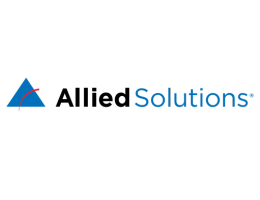In the dynamic landscape of financial services, the convergence of technology and customer empowerment is reshaping traditional practices—especially when it comes to insurance tracking. Insurance tracking is a crucial component of risk management for financial institutions. By continuously monitoring borrowers' insurance status, lenders ensure that collateral remains protected, reducing the risk of uninsured losses. Effective insurance tracking programs employ a combination of digital platforms and strategic communication to streamline the verification process and improve borrower responsiveness.
One such evolution is the adoption of borrower-centric insurance tracking—an all-encompassing approach that protects your loan collateral and your borrower relationship, simultaneously. Keep reading to explore 4 strategies to keep your borrowers at the center of your risk management program.
1. Encourage borrower-led DIV
Digital Insurance Verification (DIV) is a revolutionary approach that enables borrowers to effortlessly verify their coverage after their loan closing simply by using their mobile phones. This transformative method not only streamlines the insurance verification process but also empowers borrowers to actively participate in ensuring their coverage compliance.
Digital platforms can provide a paperless follow-up to mailed notices and encourages a seamless, borrower-led insurance verification 24/7/365. Financial institutions that incorporate DIV into the loan process help their organization to maximize insurance verifications while minimizing administrative burden.
2. Adopt strategic, omnichannel notice timing
Many lapses in insurance are merely lapses in communication. An effective program determines which borrowers do not have insurance versus which borrowers have not provided proof of insurance. On average, only 1-3% of borrowers will remain inactive once reminded of their requirement to maintain coverage.
Uninsured collateral may make up less than 10% of a lenders’ portfolio, but can amount to much higher levels of risk. To reach this portion of borrowers, strategically stagger printed notices and digital alternatives (email, text, and video messages) to maximize portfolio protection.
While sending print notices may still be helpful (with the correct address information), holistic programs that leverage digital alternatives increase borrower responsiveness. Timely and compliant insurance verification attempts result in lower lender-placed placement activity and remain focused on the borrower.
3. Stay focused on service
The primary purpose of a collateral protection program is to monitor and mitigate risk. Layering CPI with insurance tracking protects uninsured collateral in the event of damage.
Focus on keeping the financial institution’s interest in collateral protected while maintaining a positive and effective line of communication to consumers. However, some financial institutions may view the program as an opportunity to generate revenue. Due to industry rules and regulations, generating revenue through policy fees, processing fees, and other administration fees paid by the consumer is not recommended. Even if such fees are issued within regulation, in many cases the risk of potential brand damage does not offset the revenue benefit.
4. Know your KPIs
Gauge the success and evolution of your tracking program by regularly reviewing key performance metrics, such as:
- Premiums charged
- Claims data
- Loss ratios
- Penetration rate
- False placement rate
Leveraging data in your CPI program can reduce false placement by determining which borrowers are truly uninsured and only adding a fair premium to those loan balances. Predictive analytics and peer benchmarking are other valuable tools in your risk mitigation toolbox.
The bottom line: insurance tracking contributes to enterprise-wide risk management. A strong program should evolve to supplement, rather than dictate, lending strategies.








